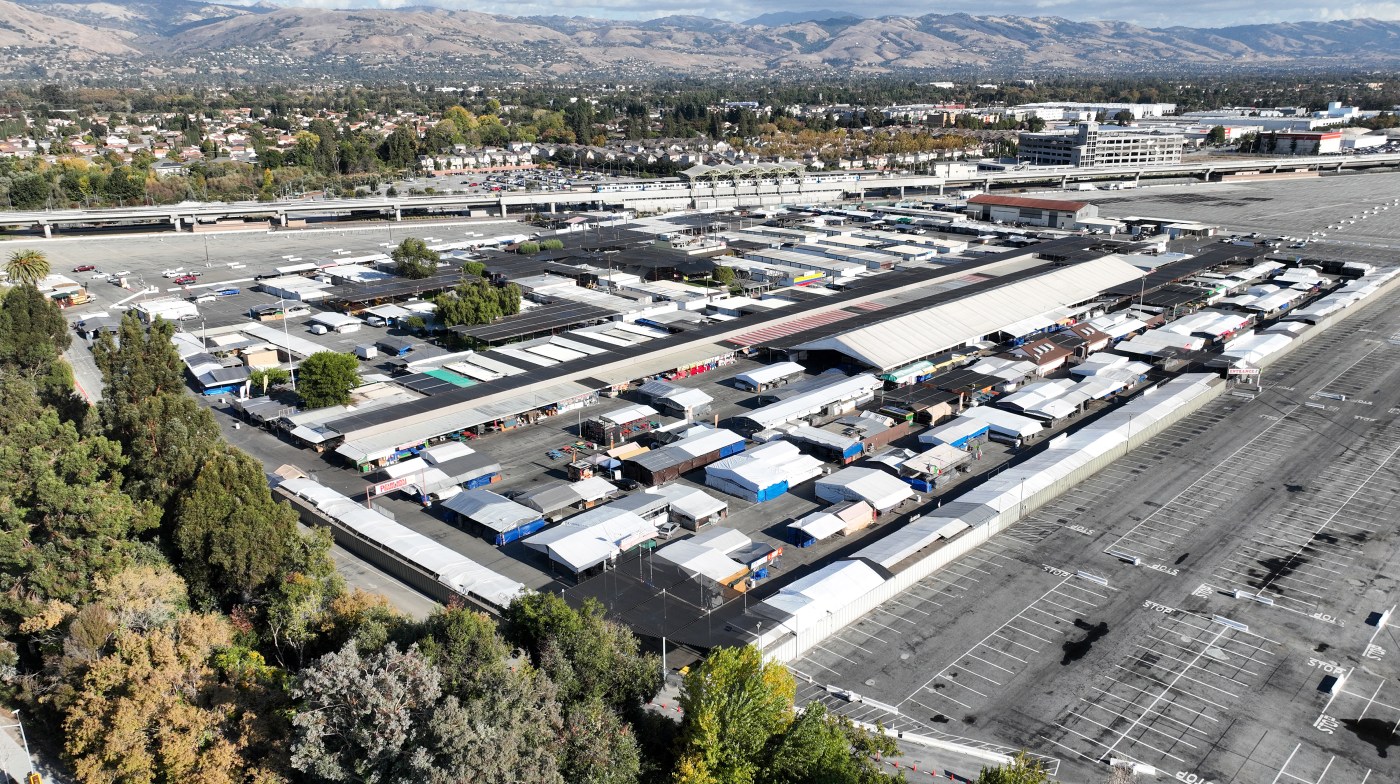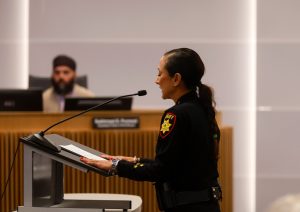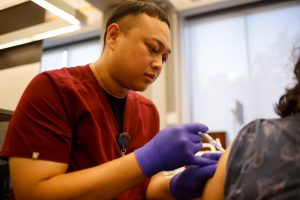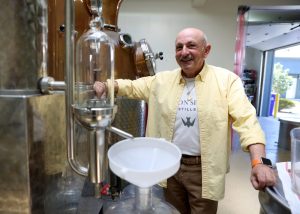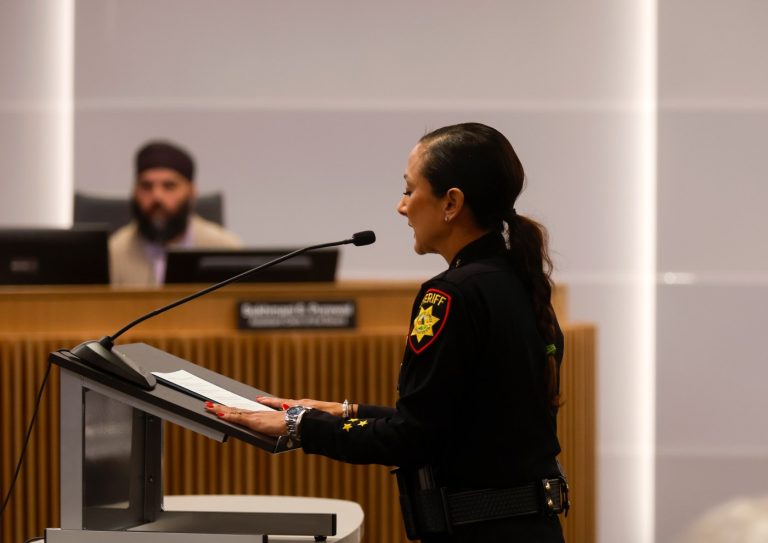For years, San Jose’s Berryessa Flea Market vendors and sellers have known they will likely need to move as the historic site makes way for homes, retail shops and office buildings in the coming decade.
Established in the early 1960s, the Flea Market grew into an iconic institution for food, shopping and fun, helping thousands of minority small-business owners become entrepreneurs along the way.
But its future remains murky, with no clear options emerging for potential sites for the flea market that is a cultural and economic force in the Bay Area, attracting visitors far and wide.
“I know it’s challenging not to have the satisfaction or security of knowing a precise answer, but we’re not there yet,” Economic Development Director Nanci Klein recently informed the Flea Market’s advisory group.
After commissioning reports to evaluate several potential sites, San Jose’s Office of Economic Development and Cultural Affairs told vendors that cost and size constraints limit the flea market’s options for a future home.
To maintain its current size, Berryessa Flea Market began looking at other sites to relocate after the city in 2021 approved rezoning the 60-plus acre property owned by the Bumb Family for the Berryessa BART Urban Village project. The project envisioned nearly 3,500 homes and millions of square feet of office and mixed-use space.
Although the plans included a five-acre portion for a potential urban market, it could only hold an estimated 300 booths, about a third of what’s currently at the site.
As a condition of the rezoning, San Jose required the property owners to provide $5 million in vendor transition support on top of the $2.5 million the city agreed to contribute.
The developers also had to give a one-year closure notice. After San Jose District 4 Councilmember David Cohen secured an extension, vendors were given until at least until Jan. 1, 2026, to stay on at the market — but with the potential loss of jobs and their livelihoods at stake, they are asking for even more notice.
“If there is no plan for development in the next three years, getting some type of commitment from that would ease our minds and give us leeway for exploring each of these other sites,” said Berryessa Flea Market Vendor Association President Roberto Gonzalez. “I don’t know how we figure that out, to be honest, but just having those conversations together and openly I think would just help this process out along the way.”
A report from Greensfelder Real Estate Strategy evaluated the pros and cons of moving the flea market to the former Singleton and Remillard landfills, the former Sears building at Eastridge Center Mall, the Santa Clara County Fairgrounds, the vacant Evergreen Center office development, vacant property at Santa Teresa and Great Oaks Boulevards and city-owned land near Ann Sobrato High School in Morgan Hill.
However, each site has considerable drawbacks, ranging from access concerns to high land acquisition and development costs.
The latest meeting held last week focused on the viability of the former Eastridge Center Sears and Singleton landfill sites, which would have enough space to host a flea market, though they each face their own hurdles.
For example, while the former Sears has several redeeming qualities, including easy access and a large customer base nearby, city officials worry that the development and rental costs could impact the site.
“We discovered through this process that the cost of bringing a very large, very old building up to the state we needed it to be was going to be cost-prohibitive,” said downtown manager Nathan Donato-Weinstein. “The preliminary cost estimate came in at over $10 million just to get the building in shape.”
Klein also mentioned that the rents could be an issue, as the current owner could get more from another tenant. Making the financial challenges more tricky, the city is not in a position to subsidize those rental costs, and the flea market will not be able to generate any additional revenues from parking fees.
People visit The San Jose Flea Market on Wednesday, May 5, 2021, in San Jose, Calif. (Dai Sugano/Bay Area News Group)
“That’s a complicated thing to think about, and we can’t force a private entity to take less than what they would get through the market,” Klein said. “It doesn’t (financially) look particularly possible at this point.”
The former 90-acre Singleton Landfill, which operated from 1964 to 1978, also presents some opportunities for development. However, remediating the property due to the presence of methane gas would require a significant investment.
Klein said one option would be to lease a portion of the Singleton property to an affordable-housing developer. Instead of collecting rent, the city could require a small portion of the site to be set aside for the flea market.
“You would say, instead of paying us money, you also develop, remediate and develop what would be the market,” Klein said. “So it’s a long process but theoretically, conceptually, it’s possible.”
While the future location of the Berryessa Flea Market remains unknown, San Jose has built a business case for it to continue. The flea market currently supports 450 vendors who rent space monthly, providing over 1,000 jobs and serving over 2 million customers annually.
A report from Strategic Economics found that the market generates nearly $9.5 million in revenue, with a gross operating income of around $5.7 million once expenses are factored in.
Related Articles
Housing development is eyed on about 50 acres of empty San Jose land
Court OKs receiver to take over fire-scarred blighted lot in San Jose
Housing agency pushes back on report over San Jose building blunder
Transit agency hunts for much bigger chunk of South Bay office space
Chamber of Commerce President & CEO spells out her vision for San Jose and its downtown
However, as other open-air markets throughout the state have found out, property owners now believe they can get a better return on their investment, putting them in a similar predicament.
“What we learned is that markets in Southern California are all experiencing the same thing that you all are experiencing up here,” said Strategic Economics President Dena Belzer. “Property owners are deciding that they can make a better return on their land by developing it for a different kind of use.”
